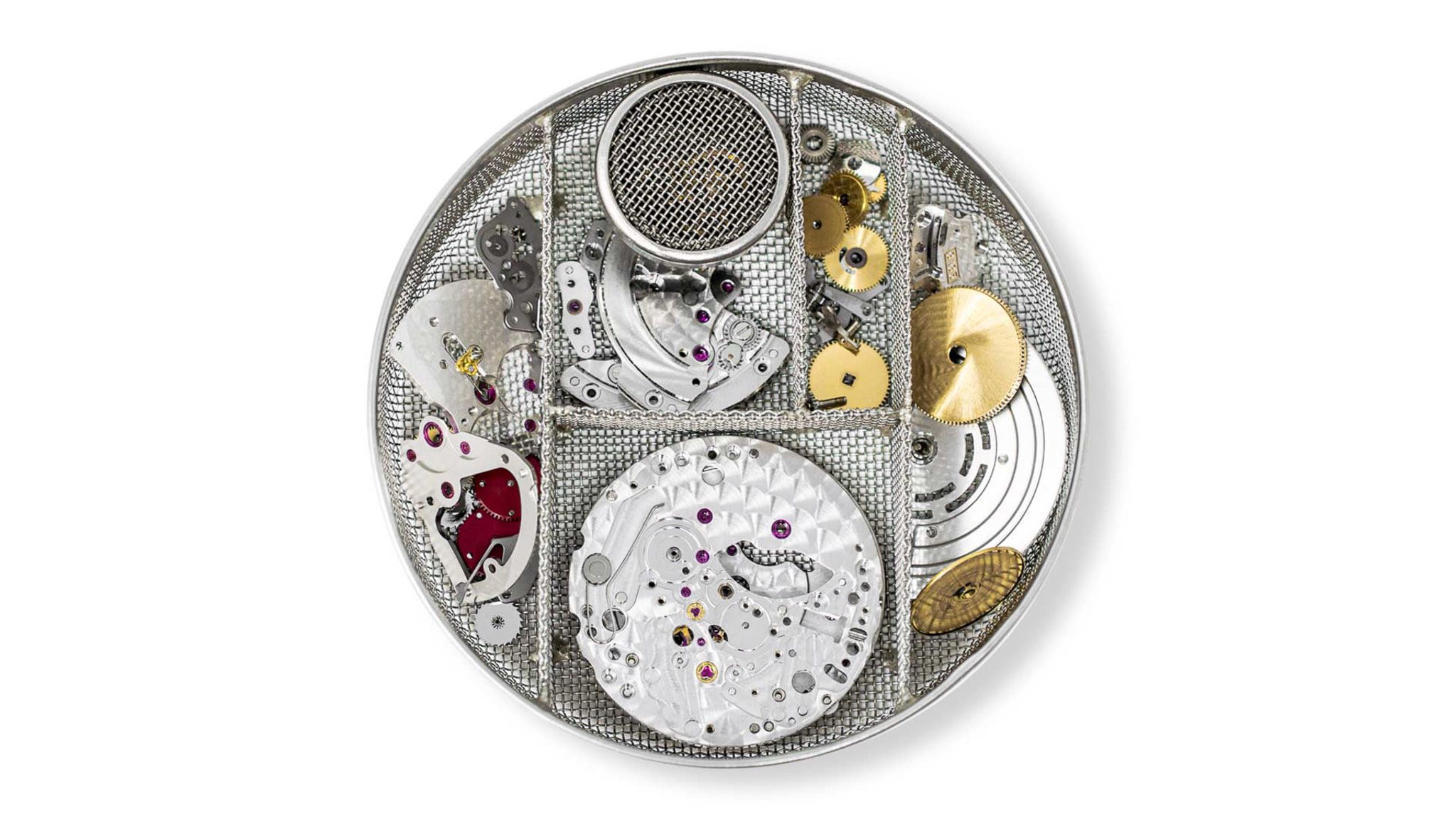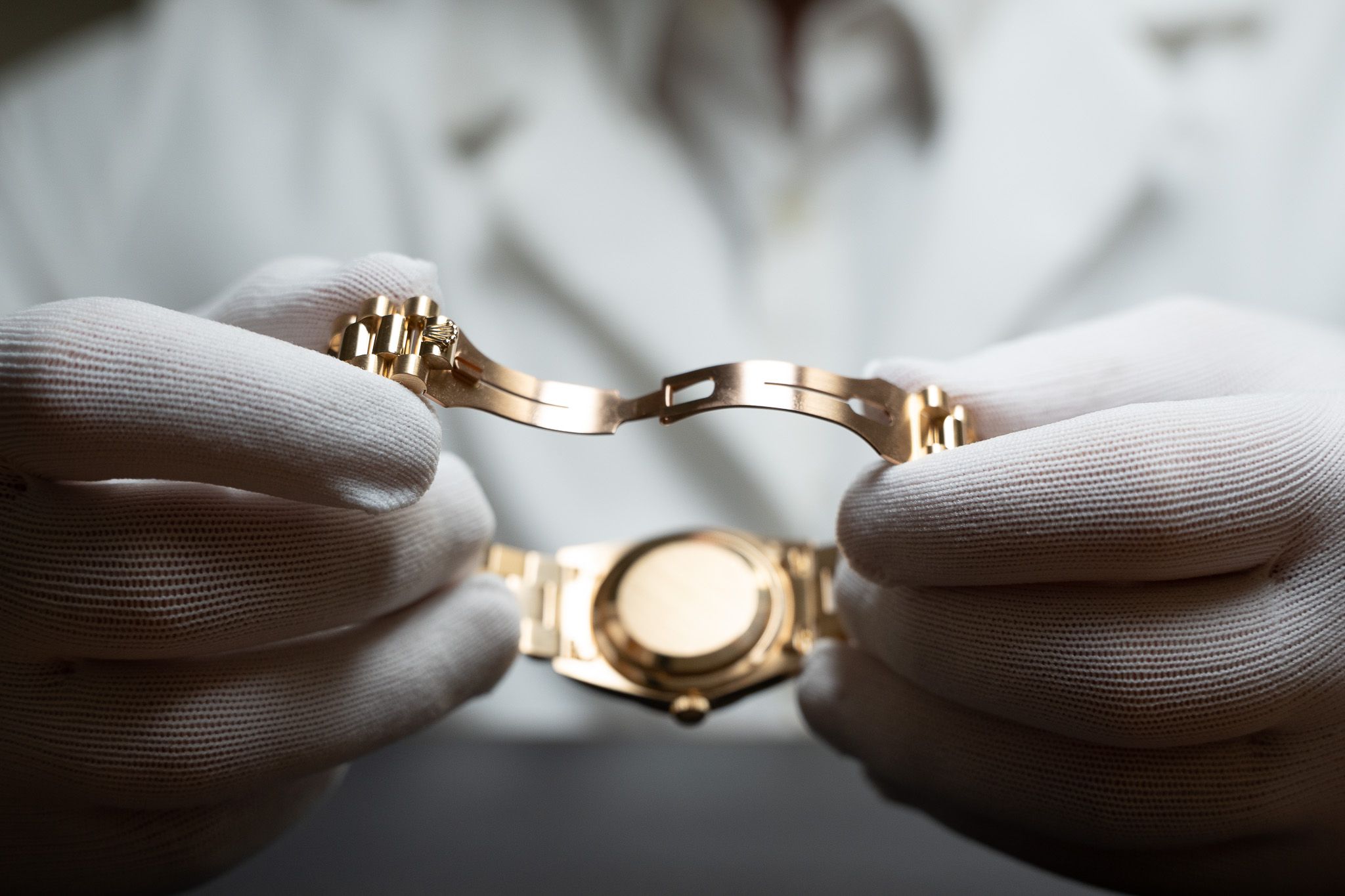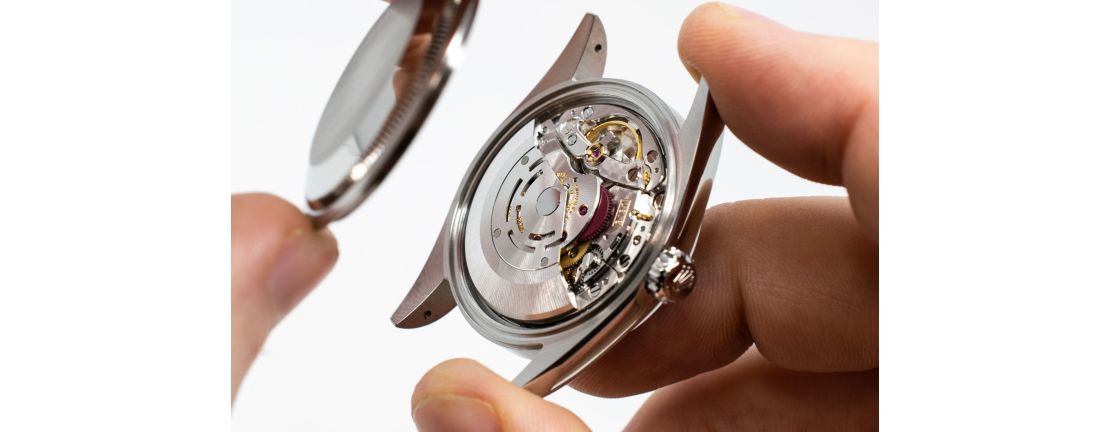Owning a Rolex means having a precision instrument on your wrist. Like any fine machinery, it needs regular care to maintain its performance and longevity.
So the question is, how much does it cost to service a Rolex?
Like many other aspects of luxury watch ownership, the answer isn't straightforward. We can give you a ballpark figure, though - on average, we estimate the cost of a full Rolex service to be around $800.
However, we encourage you to read on for a more comprehensive answer that considers all the variables that can influence the final price.
If you don't want to wait and would like a quote for your specific Rolex model – click here for a free, no-obligation service estimate. Glen, our in-house certified master watchmaker, is ready to assess your Rolex and give you an accurate quote.
Average Rolex Watch Servicing Costs
Let's get to the point and discuss what it actually costs to get a Rolex watch serviced. It's a common question, but finding a straight answer can be surprisingly difficult.
As you are well aware, Rolex makes a wide range of watches, from the classic Datejust to the sporty Submariner and the complex Daytona. Each has its own quirks and servicing requirements. A Daytona, with its chronograph function, will be a bit more complicated (and pricier) to service than a simpler model like the Oyster Perpetual.
We've put together a table of our standard full-service prices for various Rolex models. Keep in mind that these are starting points, and prices can vary greatly—depending on its age and condition, your watch might need a little more TLC.
But this should give you a good idea of what to expect:
Standard Full Service Prices
| Model | Standard Full Service Cost |
|---|---|
| Datejust | $745 |
| GMT-Master II | $770 |
| Daytona | $1,600 |
| Submariner | $745 |
| Oyster Perpetual | $745 |
| Explorer | $745 |
| Explorer II | $770 |
| Yacht-Master | $745 |
| Yacht-Master II | $1,600 |
| Air-King | $745 |
| Cellini | $800 |
| Day-Date | $770 |
| Lady-Datejust | $745 |
| Deepsea | $745 |
| Milgauss | $745 |
| Pearlmaster | $745 |
| Sea-Dweller | $745 |
| Sky-Dweller | $1,600 |
Additional Costs to Consider
Unexpected Repairs and Additional Part Replacements
When watchmakers begin their detailed inspection of your Rolex, they sometimes uncover issues that weren't apparent from the outside. The intricate nature of these timepieces means that wear and tear can occur in places not visible to the naked eye. For instance, the crown might be showing signs of wear, affecting its water resistance. Or perhaps the crystal, while looking clear, has developed micro-scratches that could compromise its integrity over time.
Rest assured, reputable service centers have a policy of informing you about any such findings before proceeding with additional repairs. They'll explain in detail what they've found and why it needs attention.
Shipping and Insurance Costs
Though not part of the service itself, shipping costs have to be considered when having your Rolex serviced. Most service centers offer insured shipping options, with round-trip costs typically ranging from $150 to $300. This covers secure packaging, tracking, and full insurance for your Rolex.
Some service providers have negotiated rates with shipping companies. At Watch Chest, for instance, we get discounted priority shipping and insurance and extend those savings to our customers.
Why Regular Rolex Servicing Matters


Rolex watches are built to last; with proper care, they can last for decades and even become family heirlooms. But even the best-made watches need attention. For this reason, Rolex recommends servicing your watch every five years.
Regular servicing will keep your watch ticking and maintain accuracy and performance. Over time, oils can dry up, and parts can wear down, affecting how well your watch keeps time. A service addresses these issues before they become problems.
Timely servicing also prevents long-term damage. Water resistance can degrade over time, potentially leading to moisture damage. Internal components can wear against each other, causing more extensive (and expensive) issues down the line.
And obviously, a well-maintained Rolex is worth more than one that's been sitting in a drawer for years. It's not rocket science - people want watches that have been cared for. If you ever decide to sell your watch, a well-serviced Rolex is going to be much more appealing to any buyer.
Servicing Options for Your Rolex
When it's time to service your Rolex watch, you have two choices: an authorized Rolex service center or a reputable independent watchmaker. Both have their advantages and disadvantages.
Authorized Rolex service centers are factory-approved and exclusively use genuine Rolex parts. They have direct access to Rolex's resources and training, and your watch is serviced according to their latest standards. The downside is that with authorized service centers, you'll pay a premium and potentially have much longer waiting times.
Going the Independent watchmaker route often offers more personalized service at a more competitive price. Independent watchmakers tend to have extensive experience with various watch brands, including Rolex, which can be beneficial for vintage or rare models.
With a Watch Chest service, you get the best of both worlds. An AWCI CW21 certified master watchmaker will service your Rolex with over 35 years of experience working on Rolex timepieces.
Pros and Cons
| Factor | Authorized Rolex Service Center | Reputable Independent Watchmaker |
|---|---|---|
| Use of genuine Rolex parts | Always uses genuine Rolex parts. | Often uses genuine parts; may use high-quality alternatives when necessary. |
| Warranty on service | Official Rolex warranty | Typically offers a warranty; terms may vary |
| Cost | Generally higher | Usually more competitive pricing |
| Turnaround time | It can be several weeks to months | Usually quicker, often within 3-4 weeks |
| Expertise | Rolex-specific training | May have broader experience |
| Handling of vintage models | Follows strict Rolex guidelines, which may not always be ideal for preserving vintage character. | Often more flexible in approach, can service to customer preferences |
| Ability to maintain originality | May replace parts as per Rolex standards | Can often repair original parts, maintaining the watch’s originality |
| Personal relationship | Typically more corporate | It can be more personal, with direct access to the watchmaker |
Authenticity and Customization in Rolex Servicing


Genuine Parts and Their Benefits
We'd always recommend using genuine Rolex components where possible. These parts are made to Rolex's exact specifications, so they fit perfectly and perform as intended. Keeping your watch all-original can also help maintain its value, especially if you're thinking about selling it down the line.
Aftermarket Parts
Some Rolex owners like to mix things up with aftermarket parts. It's a way to make your watch stand out from the crowd. Maybe you want a custom dial or a different bezel.
Remember that while these changes can make your watch unique, they might affect things like water resistance or your warranty. The impact on resale value can go either way – some buyers love customized watches, while others prefer the original.
Official Rolex service centers stick to the book – they use only genuine parts and follow Rolex's guidelines to a T. On the flip side, independent watchmakers can be more flexible. They might work on customized watches and even customize them for you. But heads up – these changes could affect how your watch works and might void your warranty.
Rolex Service Cost Factors
Age and Condition of the Watch
The age of your Rolex is often what will determine the cost. An older watch might need more work, with parts that have seen decades of wear and tear. Older Rolex Watches will require specialized handling and sometimes even hard-to-find replacement parts. A newer Rolex might get through a service with just a basic tune-up. But it's not always the case. A well-cared-for vintage piece might be in better shape than a younger watch that's seen some rough times. Scratches, dents, or water damage can all add to the service bill, regardless of the watch's birth year.
Model and Complexity
The model of your Rolex and its internal complexity significantly influence the price of maintenance. At the simpler end of the spectrum, time-only models like the Oyster Perpetual have fewer moving parts and are generally less expensive to service. As you move up the range to models with additional functions, costs tend to increase.
The real price jump comes with highly complex pieces like the Daytona chronograph or the Sky-Dweller with its annual calendar. These watches feature sophisticated movements with numerous components, demanding more time, expertise, and potentially specialized tools to service properly.
The type of movement – whether it's an older caliber or a modern one with Rolex's latest innovations – also factors into the equation, affecting both the complexity of the service and the availability of parts.
What Does Rolex Servicing Include?


Servicing a Rolex isn't just about giving it a quick clean (though that’s part of the service) and sending it on its way. It's a comprehensive process aimed at helping your watch maintain optimal performance. A full service covers everything from the intricate inner workings to the outer appearance of your watch. Let's break down what actually happens when you send your Rolex in for a service.
Complete Disassembly of The Movement
The first major step is taking apart the movement. This isn't just popping off the back and poking around. The watchmaker carefully breaks down the entire mechanism into its individual parts. We're talking tiny screws, gears, springs - the works.
This complete disassembly lets the watchmaker inspect every single component up close. They're looking for wear and tear, damage, or parts that just aren't working like they should anymore. It's also the only way to clean and lubricate everything properly.
Taking it all apart might seem extreme, but it's necessary. The only way to ensure everything's working perfectly is to check each part individually. This is also the best time to replace anything that's worn out before it causes problems.
Cleaning and Lubrication
After disassembly, each component of your Rolex undergoes a thorough cleaning process. This removes accumulated dirt, old lubricants, and any debris that might have entered the watch. The cleaning is done using specialized solutions that effectively remove contaminants without damaging the delicate parts.
Once clean and dry, the watchmaker applies new lubricants to specific parts of the movement. The right amount of the correct lubricant must be applied to each component. Too much can lead to parts sticking together, while too little can cause excessive wear. Different parts require different types of lubricants, each chosen for specific properties and the function of the part applied to.
Replacement of Worn Parts
During the service, the watchmaker inspects each component of your Rolex for signs of wear. Some parts naturally wear down over time due to constant use. Common items that often need replacement include gaskets and the mainspring.
If the crystal (the clear cover over the watch face) is heavily scratched or damaged, it may be replaced to restore clarity and protect the dial. The crown and tube, responsible for winding and time-setting, are also examined and replaced if necessary to maintain water resistance.
The goal is to replace any part that might compromise the watch's function or longevity. The watchmaker will note all replaced parts in the service record.
As Rolex designs its watches for longevity, part replacements are not always necessary during every service.
Reassembly and Calibration
After cleaning, lubricating, and replacing any worn parts, the watchmaker begins the delicate process of reassembling your Rolex. Each component is carefully put back in place.
Once reassembled, the watch undergoes calibration. This involves fine-tuning the movement to ensure accuracy. The watchmaker adjusts the balance wheel, which controls the watch's timekeeping. They'll check the watch's performance in different positions and temperatures, mimicking real-world wearing conditions. This process can take several days, as the watch is observed and adjusted repeatedly to achieve the best possible accuracy.
Case and Bracelet Polishing
The final step in the service process focuses on the external parts of your Rolex. The case and bracelet are carefully polished to remove small scratches and restore the original finish. This is a skillful process - too much polishing can alter the shape of the watch and decrease its value.
For brushed finishes, the watchmaker uses special tools to recreate the original texture. Polished surfaces are buffed to a high shine.
Wrapping Up
Now that you've seen the intricacies involved in Rolex servicing, it's clear why choosing the right service provider can't be left to chance. At Watch Chest, we bring something special to the table, namely our in-house expert, Glen, a certified watchmaster with over thirty years of Rolex-specific experience.
Reach out to us for a free, no-obligation service quote.


